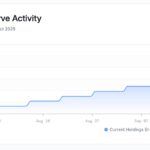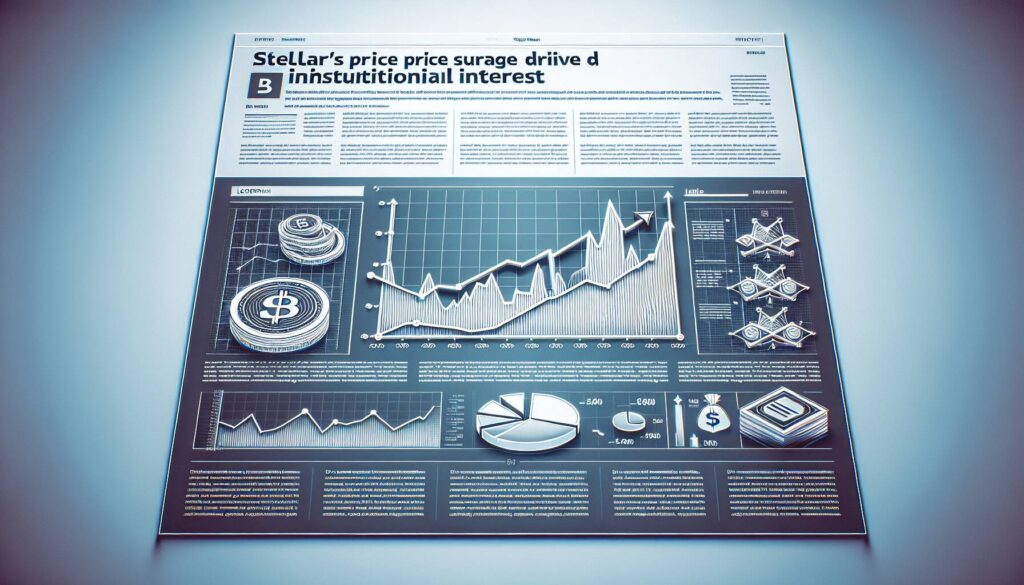Stellar’s XLM token has witnessed a notable downturn, sliding by 5% from $0.39 to $0.38 in just over a day, marking a potential shift in market sentiment. This recent decline occurred amid substantial institutional activity, as trading volumes soared to 35.51 million, significantly surpassing typical levels and indicating strong distribution pressure.
The breakdown below the crucial $0.38 support level signals a change in trader behavior, with the token now trading within a tight range of $0.019. Analysis of market trends reveals a descending channel pattern, characterized by repeated rejections at the $0.38 mark, suggesting that bearish sentiment remains firmly in control.
In the final trading hour on October 9, XLM suffered an additional 1% loss, coinciding with notable volume spikes at 13:52 and 14:01, which indicate a concerted effort by institutional sellers. Analysts pointed out that this trend reflects broader liquidation patterns across professional trading desks rather than isolated retail movements.
Key technical indicators highlight a continued trend of weakness for Stellar’s token. The failure to maintain support at $0.38, coupled with high institutional volume during downturns, suggests that heavy selling pressures persist. Resistance has consistently emerged at $0.39 during recovery attempts, emphasizing the strategic nature of this institutional distribution.
Market analysts are closely monitoring this situation, with ongoing selling suggesting potential vulnerabilities ahead for XLM. Institutional participation remains a critical factor as momentum indicators are leaning toward further downside pressure, prompting traders to reassess their strategies in light of these developments.

Stellar’s XLM Token Market Analysis
Key points impacting reader’s understanding of XLM token’s market dynamics:
- Price Decline: XLM token decreased by 5%, dropping from $0.39 to $0.38.
- Institutional Activity: Notable selloff coincided with high institutional trading volumes of 35.51 million.
- Support Level Breakdown: Critical failure of the $0.38 support level indicates shifting market sentiment.
- Descending Channel Formation: Technical analysis reveals a pattern of lower highs, suggesting bearish market control.
- Volume Spikes: Significant trading volumes at specific times indicated coordinated selling by institutions.
- Resistance Zone: Resistance has been established at $0.39, where institutional selling pressure has been consistent.
- Technical Indicators: Ongoing indicators signal potential further weakness towards the psychological support threshold of $0.38.
Understanding these elements can help readers make informed decisions in their trading strategies and assess the potential risks associated with XLM investments.
XLM’s Struggles Amid Institutional Dynamics: A Comparative Analysis
In the current landscape of cryptocurrency, Stellar’s XLM token is experiencing significant pressure, highlighted by a recent 5% decline. This downturn is particularly noteworthy given the intense institutional activity observed, which saw trading volumes soar to 35.51 million—a clear indicator of robust selling, primarily driven by large-scale investors rather than retail sentiment. This scenario resembles trends seen in other altcoins facing strong institutional sell-offs, such as Cardano (ADA) and Chainlink (LINK), which have similarly grappled with overhead resistance and distribution pressure.
Competitive Advantages: XLM’s pronounced volume suggests an acknowledgment of strategic moves by institutional players, who are often seen as more knowledgeable and financially robust. This institutional backing, although currently leading to negative sentiment, could potentially serve as a safety net for long-term holders who may anticipate a rebound once the dust settles. In contrast, more volatile assets lacking such institutional backing often experience erratic price movements and less predictable recoveries, which could deter cautious investors.
Disadvantages: The significant sell-off below the critical $0.38 threshold signals a shift in market sentiment that could lead to further declines, pushing traders to reconsider their positions. This shift presents challenges not only for current investors but may also dissuade new entrants wary of the prevailing bearish trend. Additionally, the established resistance near $0.39 limits the potential for a quick recovery, creating a daunting psychological barrier for traders hoping for upward momentum.
The situation surrounding XLM could benefit seasoned investors looking for accumulation opportunities at lower levels, particularly if they subscribe to a long-term strategy that acknowledges the cyclical nature of markets. However, this scenario poses challenges for retail investors who might be easily shaken by the bearish sentiment and high volatility, potentially leading to fear-based selling—a psychology that contrasts with institutional confidence during downturns.
For those navigating this landscape, understanding the larger market dynamics and the influence of institutional strategies will be crucial in making informed decisions. As XLM and other altcoins like it continue to evolve, the balance between short-term movements and long-term fundamentals will likely define the next phase of investment strategy in the cryptocurrency arena.

















